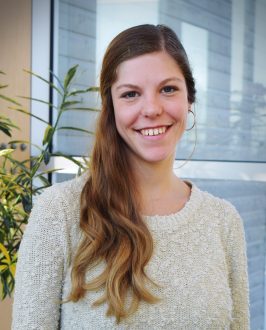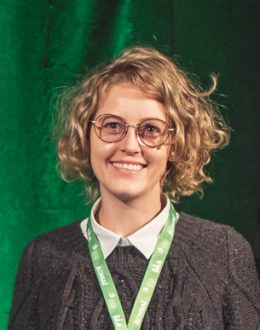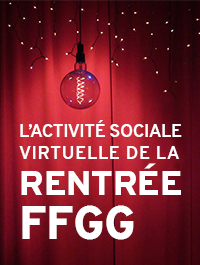Événements
Rencontre d'accueil foresterie, génie du bois et environnement 2020
02 septembre 2020 12 h 30-13 h 30
Lieu : Pavillon Abitibi-Price local 1160 ou en classe virtuelle à distance
Cette rencontre d'accueil et d'information vous permettra d'obtenir de précieux renseignements pour faciliter votre vie universitaire. Ce sera également le moment de rencontrer les responsables de la direction de programme et de la gestion des études qui vous accompagneront tout au long de votre formation. Dans tous les cas, il sera possible de suivre la rencontre à distance.
La rencontre aura lieu pendant le cours FOR 1010 - Fondements de la foresterie qui est offert en formule comodale (en classe ou à distance).
- Note: Les étudiants qui ne sont pas inscrits à ce cours recevront un lien pour se connecter à la classe virtuelle.
Informations supplémentaires :
Rencontre d'accueil aux cycles supérieurs de la FFGG
15 septembre 2020 9 h-10 h
Lieu : à distance
Cette rencontre d'accueil et d'information vous permettra d'obtenir de précieux renseignements pour faciliter votre vie universitaire. Au cours de cette activité, vous pourrez faire la connaissance de l’équipe de direction, de votre association étudiante et des employés qui vous accompagneront tout au long de vos études. Vous obtiendrez également des informations importantes pour vos études. Une invitation sera envoyée aux étudiants par courriel.
Informations supplémentaires :
Soutenance de M. Degi Harja Asmara
23 septembre 2020 14 h-17 h
Lieu : À distance
Agroforestry on post-mining restoration: a challenge beyond plant mixture system
Agroforestry is a dynamic system of ecological management of renewable natural resources, which by integrating woody species into agricultural fields, farms and other landscapes, diversifies and sustains production for increased socio-economic and environmental benefits. As a solution for the provision of ecosystem services, its application to the restoration of degraded, damaged, or destroyed (3-D) ecosystems becomes very important. 3-D lands by mining are characterized by low fertility soil and sometimes high levels of contaminants. These conditions make them difficult to obtain a short-term advantage from agroforestry compared to arable lands, but agroforestry main restorative function of restoring ecosystem services and increasing resilience can be beneficial in the long term. The challenge is to develop the best strategy to accelerate plant productivity while improving the soil and the ecosystem through a combination of ecological engineering techniques for bioremediation of mining areas. Here we explore the mixture of plants, microbial inoculation, and biochar amendment, in a woody-herbaceous agroforestry system. The goal is to find the best bioremediation scenario from the combined effects of mixing plants and other related ecological factors. Previous research on agroforestry and restoration has been reviewed worldwide, including the application of the agroforestry concept in bioremediation of post-mining land area. The known restoration strategy in a given environment is not a universal solution. Thus, the identification of any important aspect of previous work on restoration and agroforestry is crucial. The strategy of mixing plants is an important factor in the successional process. In this research, we applied the concept of modified nelder plots for the combination of plant species in a greenhouse experiment on waste rock and fine tailing to explore the interaction at the start of planting. We also applied microbial inoculum and biochar to the plant mixture in greenhouse and field tests on waste rock and fine tailing as soil materials. The performance of the co-planting of four woody species green alder (Alnus viridis (Chaix) DC. ssp. crispa (Aiton) Turrill), white spruce (Picea glauca (Moench) Voss), aspen (Populus tremuloides Michx.) and littletree willow (Salix arbusculoides Andersson) with the herbaceous plant species oat (Avena sativa L.), red fescue (Festuca rubra L .), and white clover (Trifolium repens L.) was tested. Mixing plants is a very important principle in restoration practices, given its known role to increase biodiversity and functional diversity in the sustainable ecological system. Although the plant mixing strategy has been rarely explored, we have found that the combination of species has a neutral effect (neither advantages nor disadvantages) compared to a single species in the nelder plots experiment. At the same time, the positive effect of the density suggested that the microclimate improvement had played a role in the early growth of the plantations. The field trial confirms the positive effect of the microclimate modification on plant productivity in higher planting density. The trade-off on plant competition has shown, however, that the highest density does not necessarily show an optimal condition for plant productivity. The interaction effect of biochar and inoculation treatment shows the benefit of this treatment, although the impact varies according to the density of planting. We suggest that improving the microclimate is important for early plant growth. This improvement can be achieved by adjusting the planting density and the combination of the mixture of plant growth forms. The effect of biochar on albedo and soil surface temperature can be as important as it alters the physical characteristics of the soil. In conclusion, we recommend plant mixture in bioremediation practices in order to improve the microclimate, biodiversity and bio-productivity.
Informations supplémentaires :
Membres du jury
Président
M. André Desrochers
Université Laval, Faculté de foresterie, de géographie et de géomatique
Examinateurs
M. Damase Khasa
Université Laval, Faculté de foresterie, de géographie et de géomatique
Mme Suzanne Allaire
Geca Environnement
M. Lin Chung-Ho
University of Missouri
M. Nathan Basiliko
Laurentian University
M. Silvio José Gumiere
Université Laval, Faculté des sciences de l'agriculture et de l'alimentation
Activité sociale virtuelle de la rentrée FFGG
24 septembre 2020 16 h 30-17 h 30
Lieu : Activité virtuelle
Participez à l’activité sociale virtuelle de la rentrée qui mettra en vedette des étudiants artistes de la Faculté!
Notez cette date à votre agenda et venez fêter la rentrée universitaire!
Déroulement de l'activité:
- Mot de la doyenne, Nancy Gélinas
- Gabrielle Côté , Auteure-compositrice-interprète
- Moïse Samson et Gabriel Parisé, Jam acoustique
- William Asselin, DJ
- Mots de clôture d’Alexandre Morin-Bernard et Marie-Eve Lajeunesse, Représentants des associations étudiantes
Un lien pour se connecter à l'événement sera envoyé ultérieurement aux étudiants et employés de la FFGG.
Informations supplémentaires :
Image : Stephen Sharp, Unsplash
Présentation de projets de doctorat en génie du bois et des matériaux biosourcés
30 septembre 2020 10 h-11 h 15
Lieu : En ligne
Le réseau MRQ diffusera les présentations du cours Présentation de projet de doctorat (GBO-8002) de deux étudiantes de l’Université Laval. Le cours est sous la supervision du professeur Roger Hernández. Chacune des présentations durera 20 minutes et sera suivie d’une période de questions d’une durée de 10 minutes.
10h00: Mot de bienvenue
 10h10: Chloé Paquet | Lire le résumé
10h10: Chloé Paquet | Lire le résumé
Développement de vernis auto-réparateurs pour la finition des couvre-planchers en bois
Directrice : Véronic Landry
Co-directeur : Jean-François Morin

10h40: Cleide Beatriz Bourscheid | Lire le résumé
Impacts des vitesses de coupe et d’avance sur la distribution des dimensions des copeaux papetiers produits par une équarrisseuse-fragmenteuse
Directeur : Roger Hernández
Co-directeur : Carl Blais
Informations supplémentaires :
https://www.materiauxrenouvelables.ca/presentation-des-projets-de-doctorat-de-chloe-paquet-et-de-cleide-b-bourscheid
